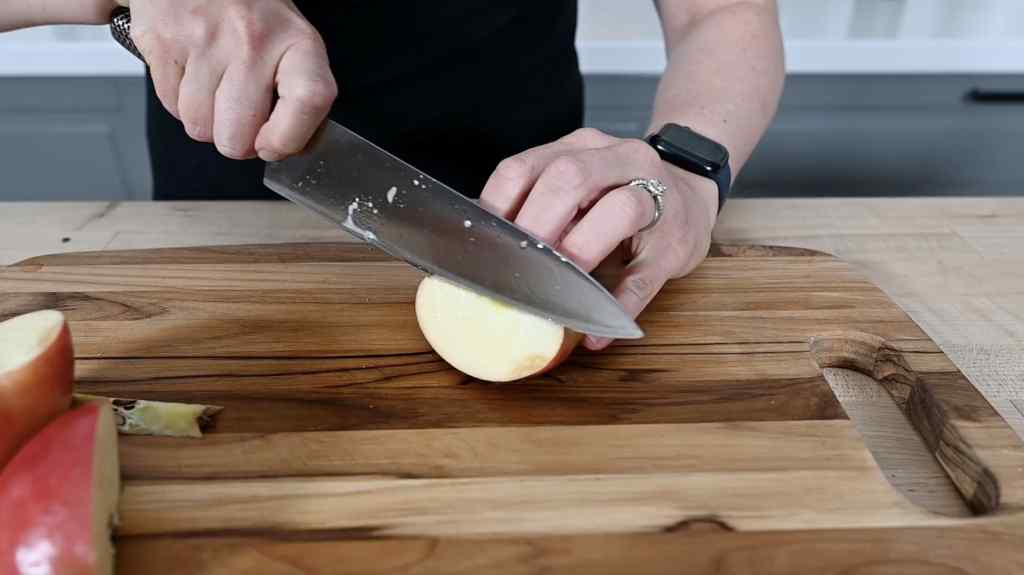In the world of kitchen cutlery, the debate between German vs Japanese sharpening is as sharp as the knives themselves. Professional chefs and culinary enthusiasts often find themselves at a crossroads when deciding which sharpening technique suits their needs. Both styles offer unique advantages and cater to different culinary preferences. Understanding these differences is crucial for kitchen professionals who strive for precision and perfection in their culinary creations.

The Essence of German Sharpening
German knives, renowned for their durability and strength, are popular in kitchens worldwide. They typically feature a thicker blade and a more robust angle, usually around 20 degrees. This design makes them perfect for heavy-duty tasks, such as chopping through bones or dense vegetables.
The sharpening process for German knives involves maintaining this sturdy angle. Many chefs prefer using a whetstone or a sharpening steel to achieve the desired edge. Regular maintenance is crucial to keep these knives in optimal condition, ensuring they remain a reliable kitchen companion.
For those interested in understanding more about the benefits of German knife sets, this article offers valuable insights into why these knives are a staple in professional kitchens.
Understanding Japanese Sharpening Techniques
Japanese knives are famed for their precision and razor-sharp edges. They are often crafted with a narrower angle, typically between 10 to 15 degrees, allowing for incredibly precise cuts. This sharpness is ideal for delicate tasks like slicing fish or finely chopping herbs.
Sharpening Japanese knives requires a different approach. The use of finer whetstones is common, and the process demands a careful hand to maintain the delicate edge. Chefs who master this technique can achieve unparalleled sharpness, enhancing their culinary skills significantly.
Comparing Durability and Maintenance
When comparing the durability of German vs Japanese sharpening, it's essential to consider the materials used. German knives often use softer but tougher steel, which can withstand rigorous tasks. However, this means they may need more frequent sharpening to maintain their edge.
On the other hand, Japanese knives are usually made from harder steel, allowing them to retain their sharpness longer. However, this hardness makes them more prone to chipping, requiring careful handling and maintenance.
For a deeper dive into how to care for your knives, the Victorinox knife care guide provides essential tips on keeping your blades in top shape.
Choosing the Right Knife for Your Kitchen
The decision between German and Japanese knives ultimately comes down to personal preference and the type of culinary tasks you frequently undertake. If you often find yourself working with tough ingredients and need a reliable workhorse, German knives are the way to go. However, if precision and finesse are what you seek, Japanese knives will not disappoint.
Understanding the history and craftsmanship behind these knives can also influence your decision. For those intrigued by the rich history of German knife making, the Element Knife blog offers a fascinating look into the storied past of German blades.

FAQs
What is the main difference between German and Japanese sharpening?
The primary difference lies in the angle and technique. German knives have a thicker angle (around 20 degrees) ideal for heavy-duty tasks, while Japanese knives feature a finer angle (10-15 degrees) for precision cutting.
How often should I sharpen my knives?
The frequency depends on usage. German knives might require more frequent sharpening due to their softer steel, while Japanese knives, made from harder steel, can maintain their edge longer but need careful handling.
Can I use the same sharpening tools for both types of knives?
It's best to use tools suited to each knife type. A whetstone is versatile but choosing the right grit and technique for each knife ensures optimal results.
In conclusion, the choice between German vs Japanese sharpening is a personal one, heavily influenced by your culinary style and the demands of your kitchen. Both have their merits, and understanding these can enhance your culinary prowess significantly.
For further insights into the differences between German and Japanese chef's knives, check out this article that offers a comprehensive comparison.


























